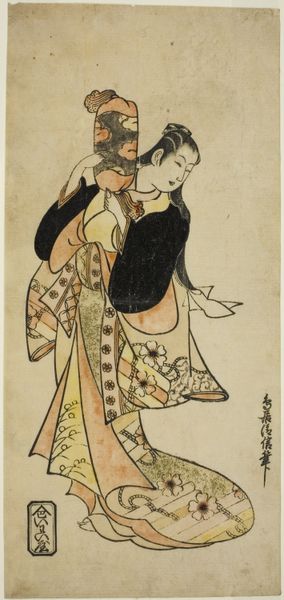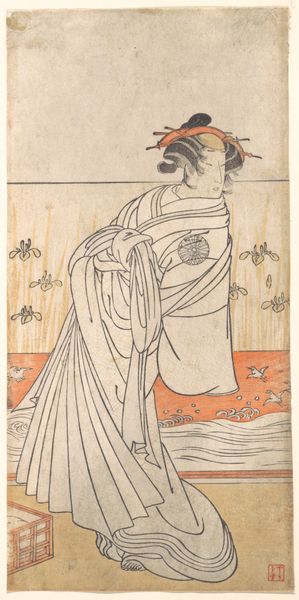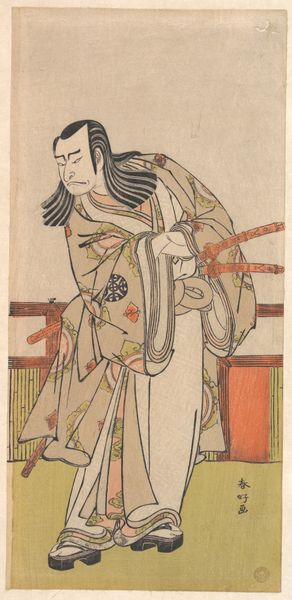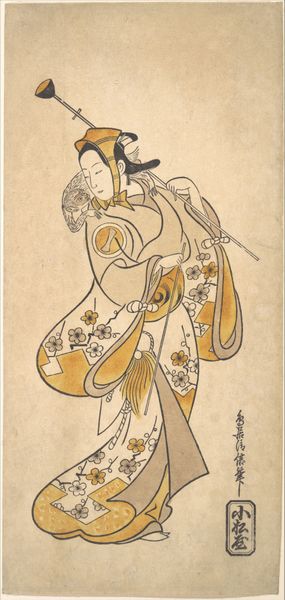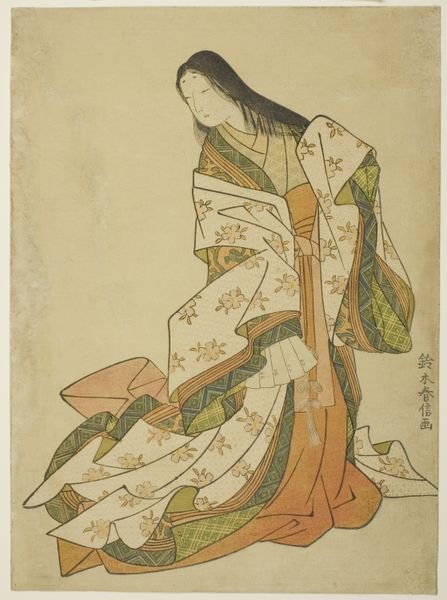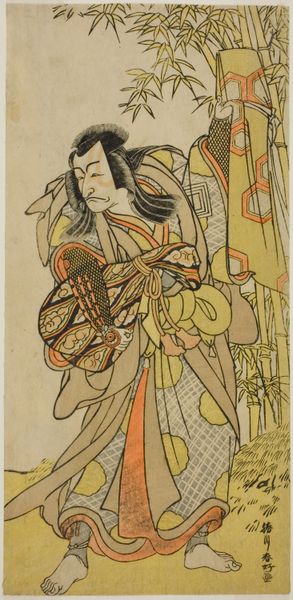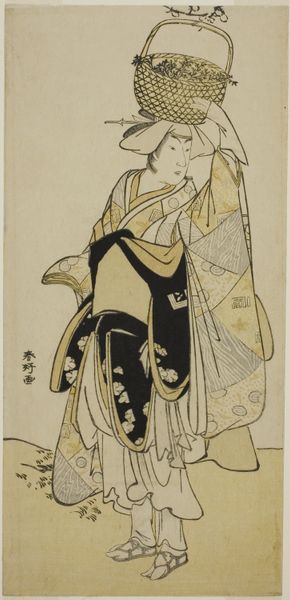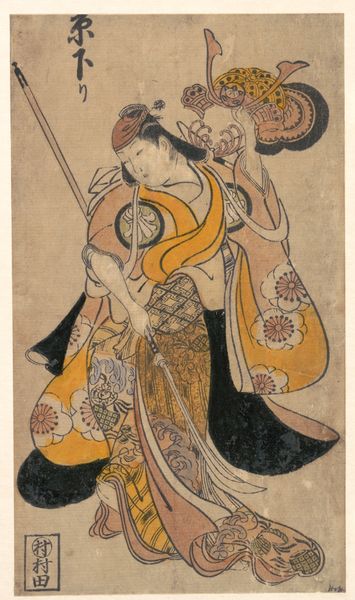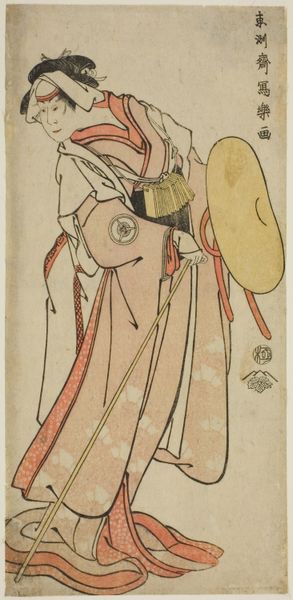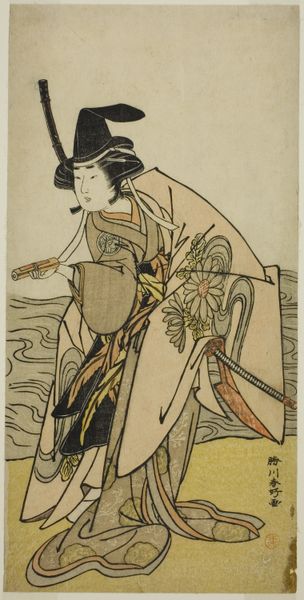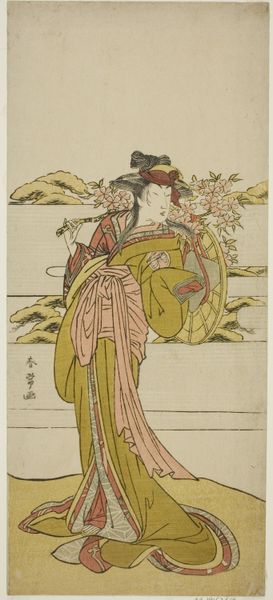
print, ink, woodblock-print
#
portrait
#
ink drawing
#
ink painting
# print
#
asian-art
#
landscape
#
ukiyo-e
#
figuration
#
ink
#
woodblock-print
#
watercolor
Dimensions: 12 1/4 × 5 1/2 in.
Copyright: Public Domain
Editor: This woodblock print from the 1770s, "The Heron Maiden" by Torii Kiyotsune, at the Art Institute of Chicago, has a calm, almost melancholic feel. The woman's posture seems withdrawn, and the muted colors add to the subdued mood. How do you interpret this work, considering the ukiyo-e tradition? Curator: This print gives us a glimpse into the visual culture and entertainment industry of Edo-period Japan. Ukiyo-e, translating to 'pictures of the floating world', focused on transient beauty and everyday life, often featuring courtesans and actors. Kiyotsune's 'Heron Maiden' references this milieu but elevates it through suggestion. Do you see how the umbrella is not merely functional but contributes to a sense of cultivated elegance and perhaps even anonymity? Editor: Yes, I see what you mean. The umbrella definitely adds an air of mystery to the figure. Was the portrayal of women common, and were there any underlying social messages conveyed through these prints? Curator: Absolutely. Ukiyo-e prints played a crucial role in shaping societal ideals of beauty and fashion. The depiction of women, particularly those associated with the pleasure quarters, reveals complex social dynamics. These prints served not just as aesthetic objects but also as conduits for discussing status, desire, and the fleeting nature of life. Can we really separate art from gossip? This wasn't always about high-minded ideas. The subtle class signifiers in her clothing also speak to very specific audiences. Editor: That’s fascinating. I never thought about ukiyo-e prints as a kind of early media shaping public perception. It gives a new depth to what I initially perceived as simply a pretty picture. Curator: Exactly! It shows how deeply art is embedded within its social fabric. The 'floating world' wasn’t just an escape, but a carefully constructed stage upon which social roles and aspirations were both performed and critiqued. Editor: Thanks for sharing your insight. Now I see the Heron Maiden in a richer, more historically grounded way. Curator: Indeed. It's these intersections of art, society, and history that make art so rewarding to study.
Comments
No comments
Be the first to comment and join the conversation on the ultimate creative platform.

